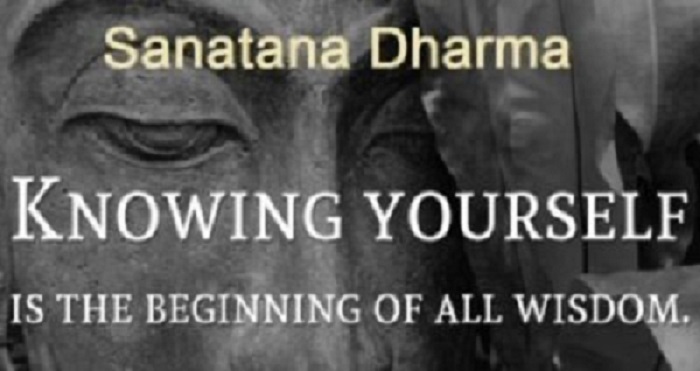Sanatana Dharma and Other Religions of India: An Insight Story
A Bird’s Eye View of Sanatana Dharma, Which Represents the Most Ancient Religion of the World
Let us talk today about the world’s most ancient religion. Let us talk about Sanatana Dharma.

Resolution:
Sanatana Dharma is by its very essence a term that is devoid of sectarian leanings or ideological divisions. This is evident by the very term itself. The two words, “Sanatana Dharma”, come from the ancient Sanskrit language. “Sanatana” is a Sanskrit word that denotes that, which is Anadi (beginningless), Anantha (endless) and does not cease to be, that which is eternal and everlasting. With its rich connotations, Dharma is not translateable to any other language. Dharma is from dhri, meaning to hold together, to sustain. Its approximate meaning is “Natural Law,” or those principles of reality which are inherent in the very nature and design of the universe. Thus the term Sanatana Dharma can be roughly translated to mean “the natural, ancient and eternal way.”
What is Sanatana Dharma?
Sanatana Dharma does not denote to a creed like Christianity or Islam but represents a code of conduct and a value system that has spiritual freedom as its core. Any pathway or spiritual vision that accepts the spiritual freedom of others may be considered part of Sanatana Dharma.
First and foremost, Sanatana Dharma is anadi (without beginning) and also a-paurusheya (without a human founder). It is defined by the quest for cosmic truth, just as the quest for physical truth defines science. Its earliest record is the Rigveda, which is the record of ancient sages who by whatever means tried to learn the truth about the universe, in relations to Man’s place in relation to the cosmos. They saw nature — including all living and non-living things — as part of the same cosmic equation, and as pervaded by a higher consciousness. This search has no historical beginning; nor does it have a historical founder. This is not to say that the Rigveda always existed as a literary work. It means that we cannot point to a particular time or person in history and say: “Before this man spoke, what is in the Rigveda did not exist.”
The Nature of Sanatana Dharma: By its nature, Sanatana Dharma is ……
a) God-centered rather than prophet-centered.
b) Experience based rather than belief based.
c) Beyond any historical date of founding.
d) The process of growth, which comes from the seed.
e) Inherent in, and inclusive of all.
f) In the world, while above the world.
g) Both immanent and transcendent.
h) The whole and the parts.
i) Loving of all and excluding of none.
Basic Principles:
1. Sanatana Dharma recognizes that the greater portion of human religious aspiration has always been unknown, undefined, and outside of any institutionalized belief.
2. The universal flow of Dharma, regardless of what name you call it, whether Dharma or some other name, has eternally existed. It has been before any of the great teachers were born. It is not better than, or alternative to, but is inclusive of all. Dharma is that out of which our earth and humanity itself emerged. Dharma not only is, but always was, and always will be. To live in alignment with, and to know the true nature of that Sanatana Dharma is one of the ways of describing the higher goal of life.

7. Sanatan Dharma makes use of yoga as the means to attain moksha (God-realization). Yoga has been poorly translated to mean “union”. It does mean “union”, but that is a poor definition because it encompasses so much more. Yoga is the union with Brahman (Absolute God). Yoga is also the means to achieving union with Brahman. Therefore, the word yoga is not merely a statement of the union, but it encompasses the actual experience of liberation.
Summary:
Sanatana Dharma is the ancient form of Hinduism, which denotes the “eternal” or absolute set of duties or religiously ordained practices incumbent upon all Hindus, regardless of class, caste, or sect. Different Hindu religious books, the Vedas, the Upanishads, the Puranas prescribe different lists of the duties, but in general Sanatana dharma consists of virtues such as honesty, refraining from injuring living beings, purity, goodwill, mercy, patience, forbearance, self-restraint, generosity, and asceticism. Sanatana dharma is contrasted with Sva-dharma, one’s “own duty” or the particular duties enjoined upon an individual according to his or her class or caste and stage of life.
To know more about the Sanatana Dharma and to understand Difference between Christianity & Hinduism perspicuously watch the video The Insight of Sanatana Dharma.
Reference:
(i) Encyclopaedia Britannica
(ii) Religion and politics in India by Anupama Arya
(iii) Bhagavata Purana
(iv) Boundaries of faith: geographical perspectives on religious fundamentalism by Roger W. Stump



